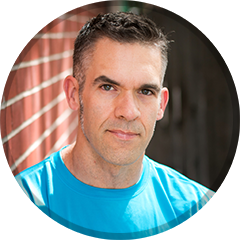It may not be a huge surprise that most of us in this country don’t eat a healthy diet. Now the data is in and according to the U.S. Centers for Disease Control and Prevention, in 2009, 67.5 percent of adults ate fruit less than two times daily and 73.7 percent ate vegetables less than three times per day. This information comes from an article in Business Week.
These numbers are in contrast to the goals of Healthy People 2010, a comprehensive set of health objectives set by the government. The goals of Healthy People 2010 were for 75 percent of people to eat at least two servings of fruit and 50 percent to eat at least three servings of vegetables every day. Despite these noble efforts, over the past decade there has been a two percent decrease in fruit consumption and no change in the vegetable consumption, researchers found. This program is failing. Why?
It’s hard to imagine that ignorance is driving our avoidance of produce. Who among us doesn’t know that fruits and vegetables are good for us? One issue is that low-income Americans are less likely to have access to fresh fruits and vegetables at affordable prices compared to affluent Americans. (For more on this issue, read about food deserts.)
Connie Diekman, director of university nutrition at Washington University in St Louis discusses the affordability of fresh produce:
“Another factor that seems to impact purchasing fresh produce that is not clear in this report is the cost of fresh produce,” Diekman said. “With economic changes the last several years, the slight differences in consumption based on household income might be an important factor for health-care providers to address.”
(I find it tragically laughable that fresh produce–food that’s plucked right off a tree or a vine; or pulled right out of the ground–can cost more per calorie than a highly complex, laboratory engineered food such as a Twinkie, frozen pizza, or a sugary soda. This is what our farm subsidies are doing to us.)
Most interesting to me are the neurological factors behind what we eat, and why even though we know what’s healthy and unhealthy we still make unhealthy choices. Samantha Heller, a dietitian, nutritionist, exercise physiologist and clinical nutrition coordinator at the Center for Cancer Care at Griffin Hospital in Derby, Connecticut says the following:
“It is easy to fill up on fast food, junk foods, sweets and sugar-sweetened beverages. In addition, by eating these highly palatable foods — those high in fat, sugar and sodium — we alter our taste and mental expectations about how a food is ‘supposed’ to taste.”
“We end up craving these foods and the healthier fare is ignored. Thus, a sweet ripe peach does not taste very sweet to someone who just chugged a 20-ounce soda or ate a bowl of ice cream. The same with vegetables. The delicious taste of many vegetable pales in comparison with high-fat, high-sodium cheese burgers and french fries.”
This is a tremendous uphill battle we face as a nation. It’s this very issue that’s at the heart and core of our health care system. We’ve had heated debate on what form of health care we’ll have and how to fund the system. Yet we avoid the most significant factor in our health care, that is what we chose to eat or not eat. It’s too tough an issue for politicians to discuss as pointing out our failings at personal responsibility tend to anger voters. (In contrast, Michelle Obama has done a very admirable job of bringing attention to the issue of nutrition and obesity.) No number of doctors, drugs, or high-tech medical devices can offset our personal habits. I’m not sure that there’s a light at the end of this tunnel.

